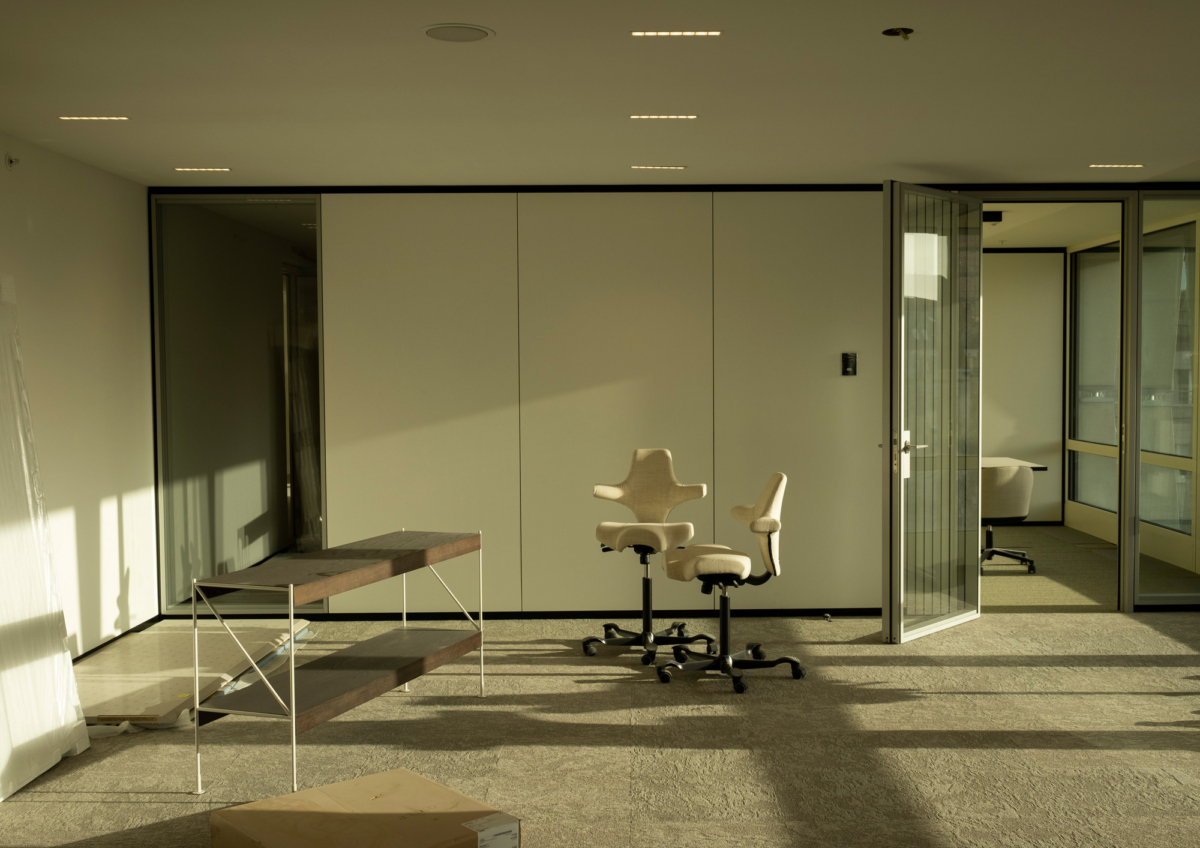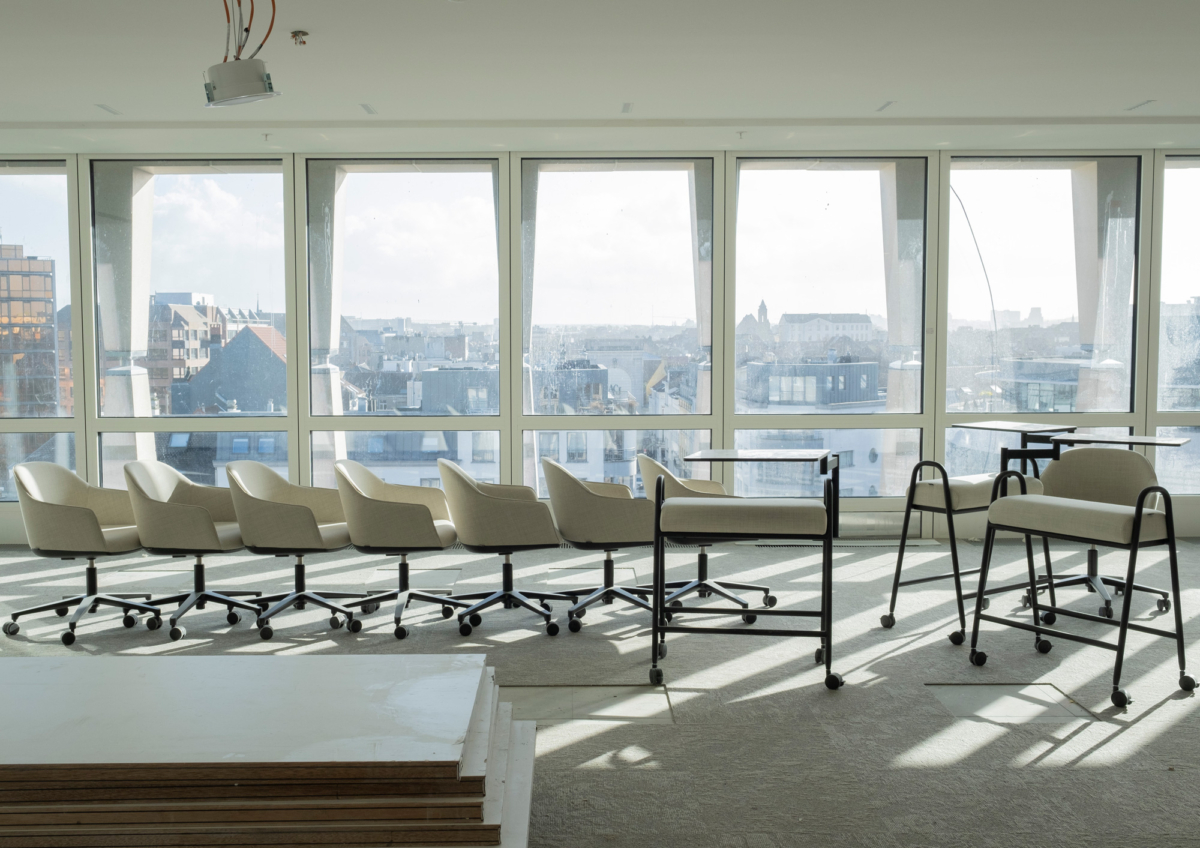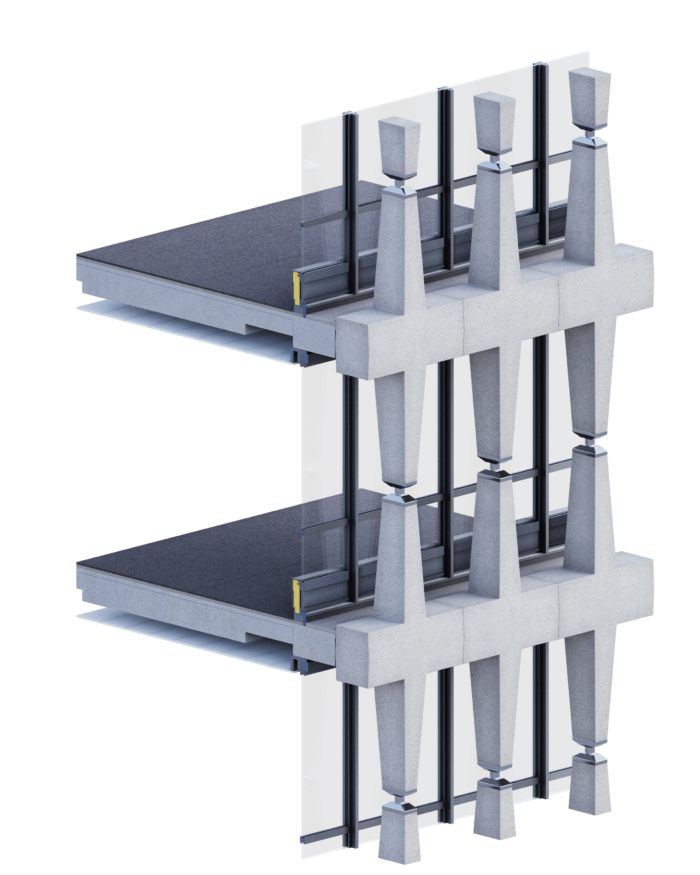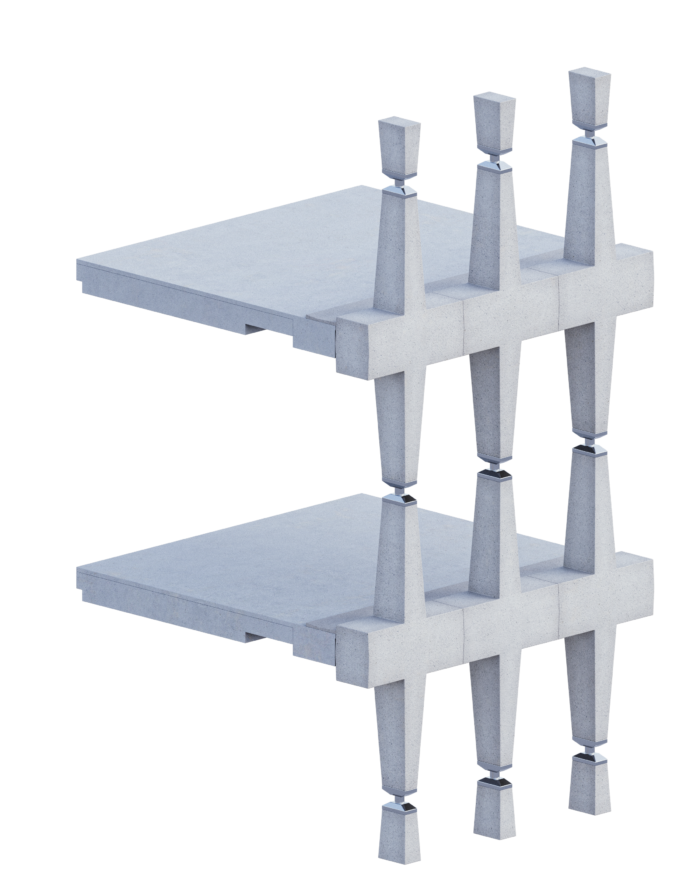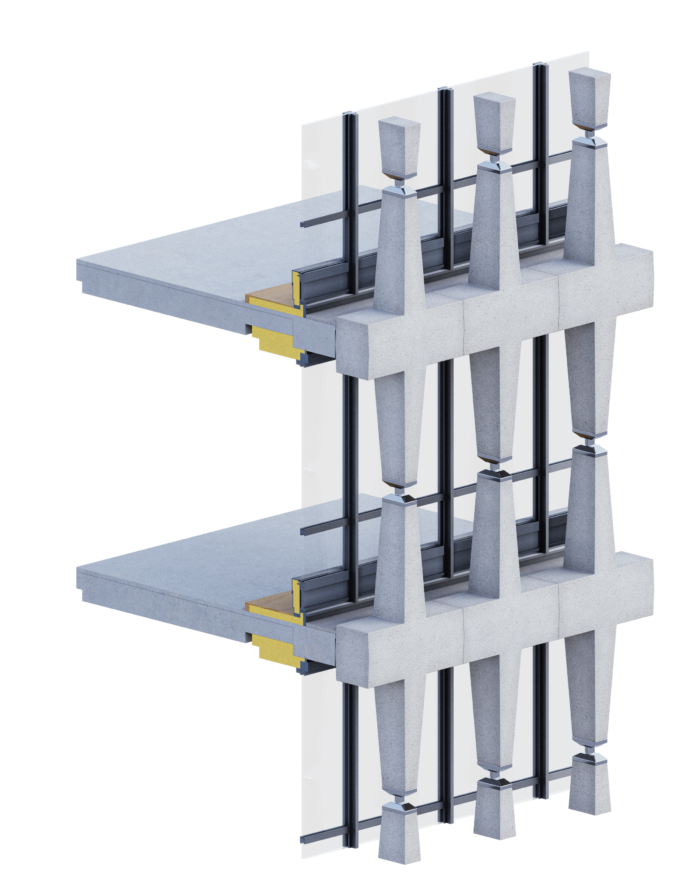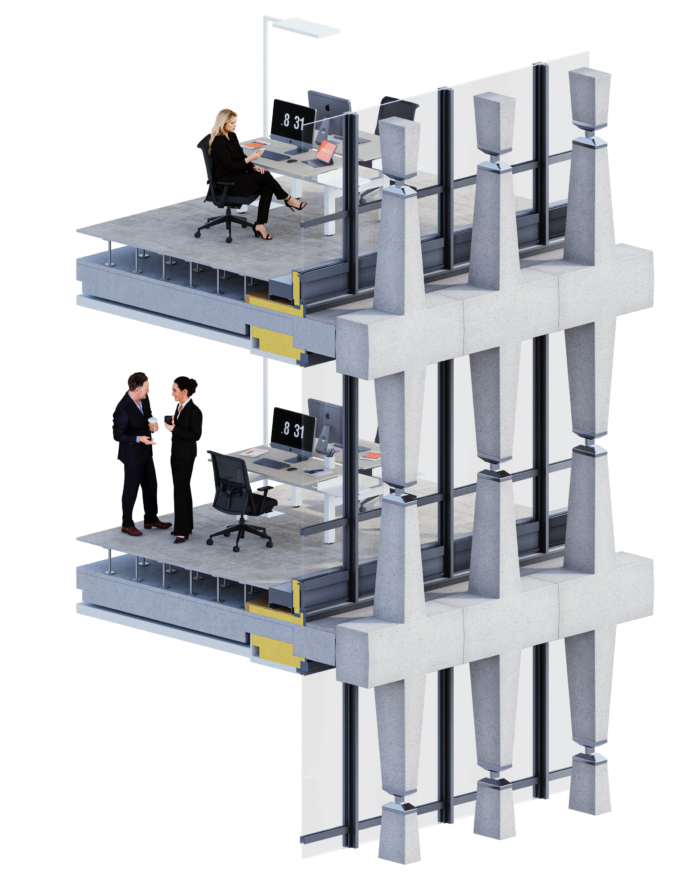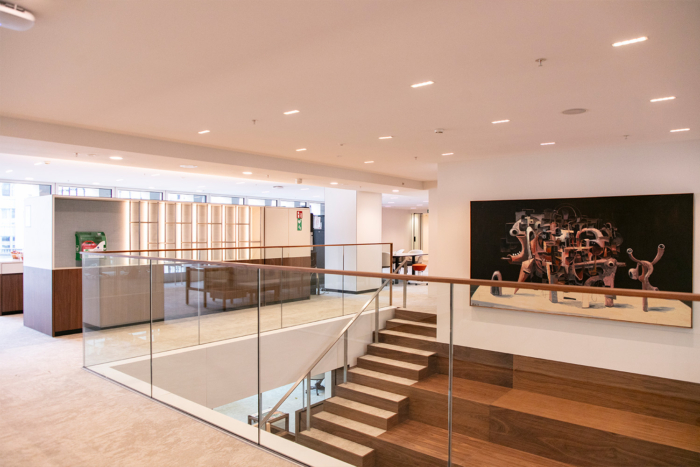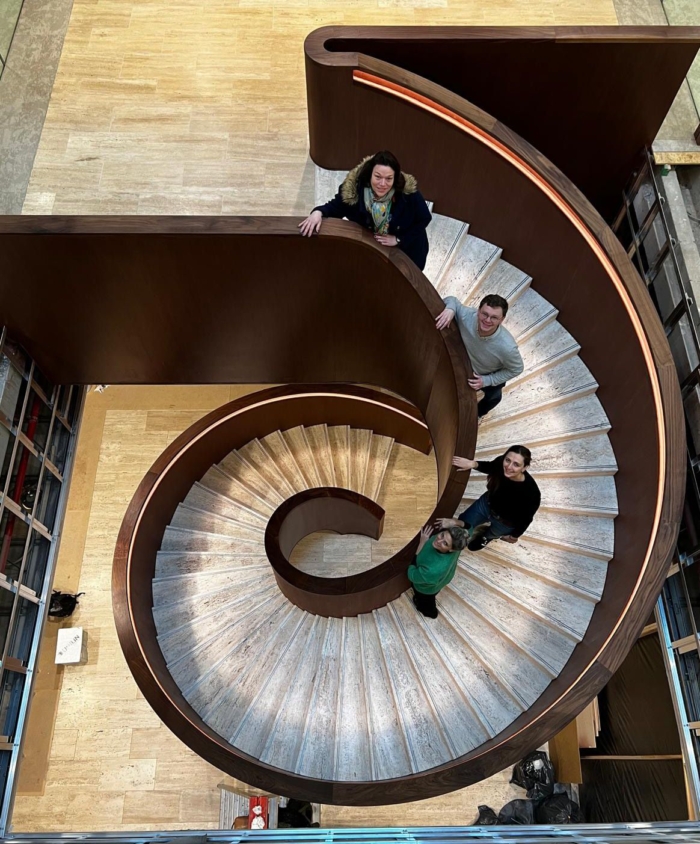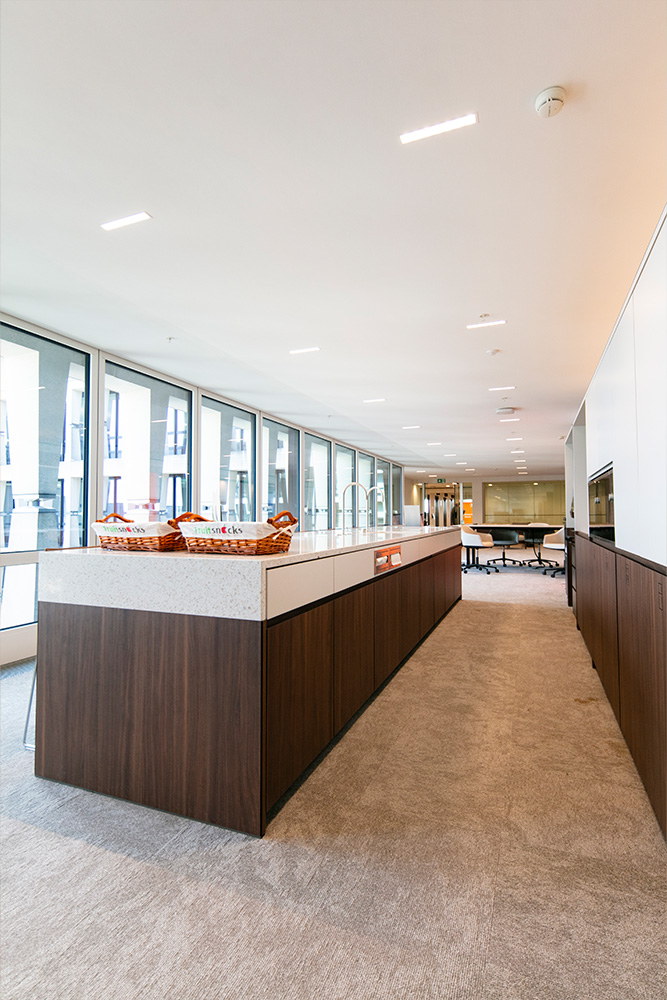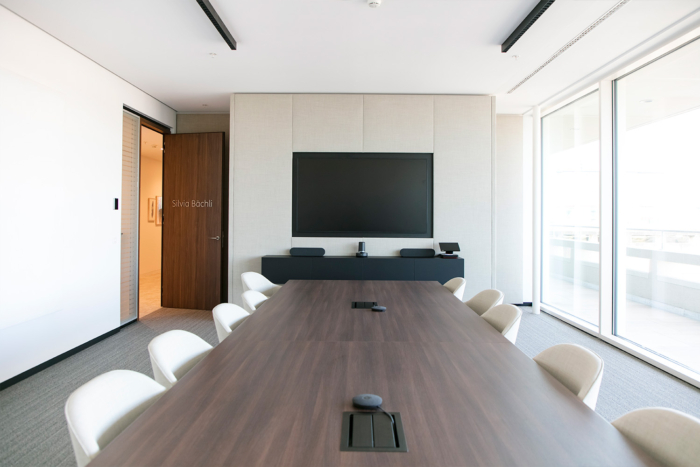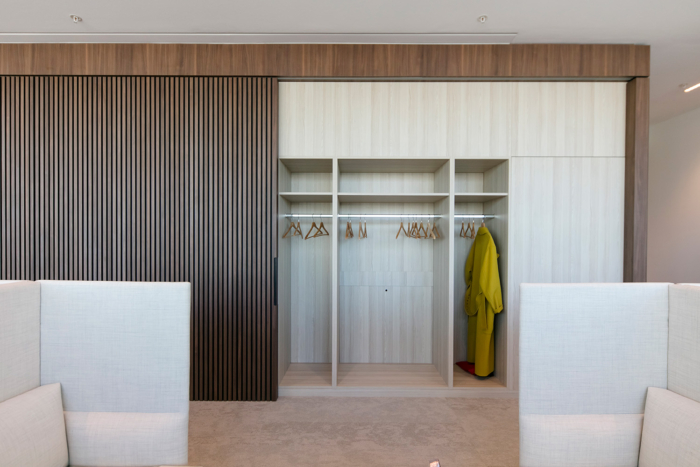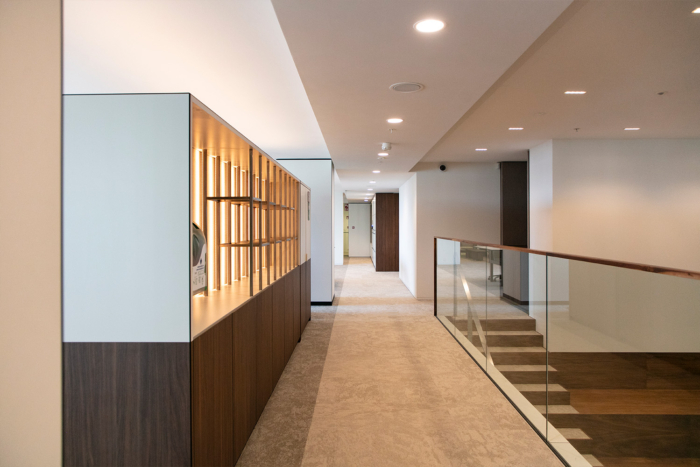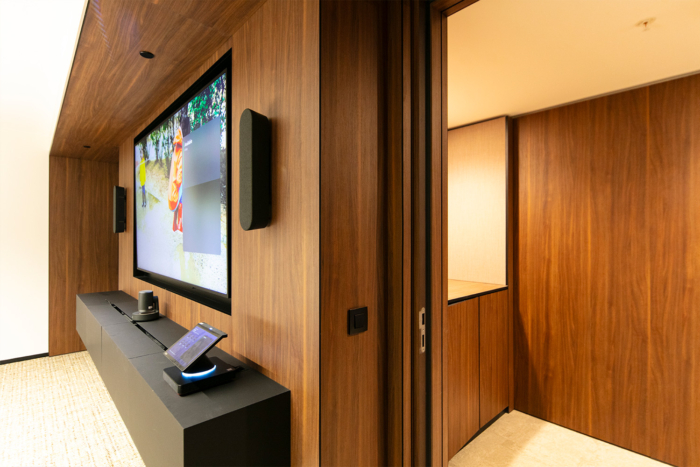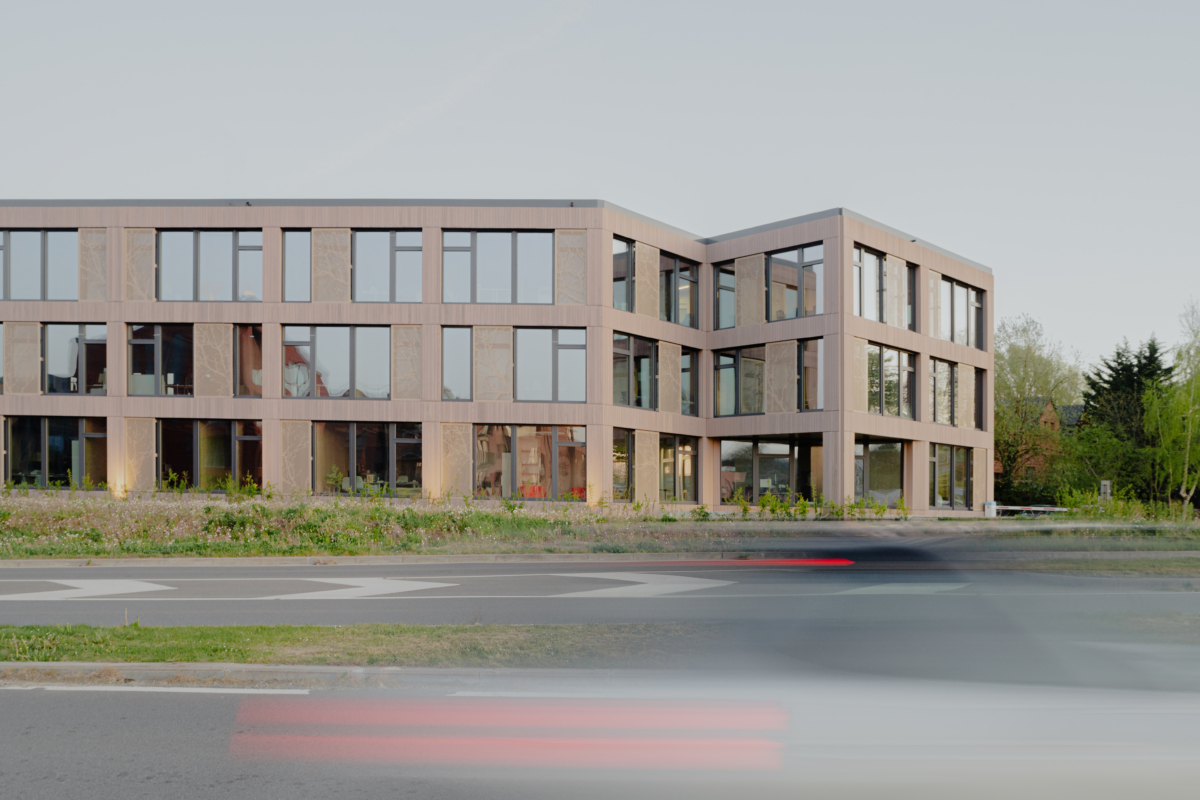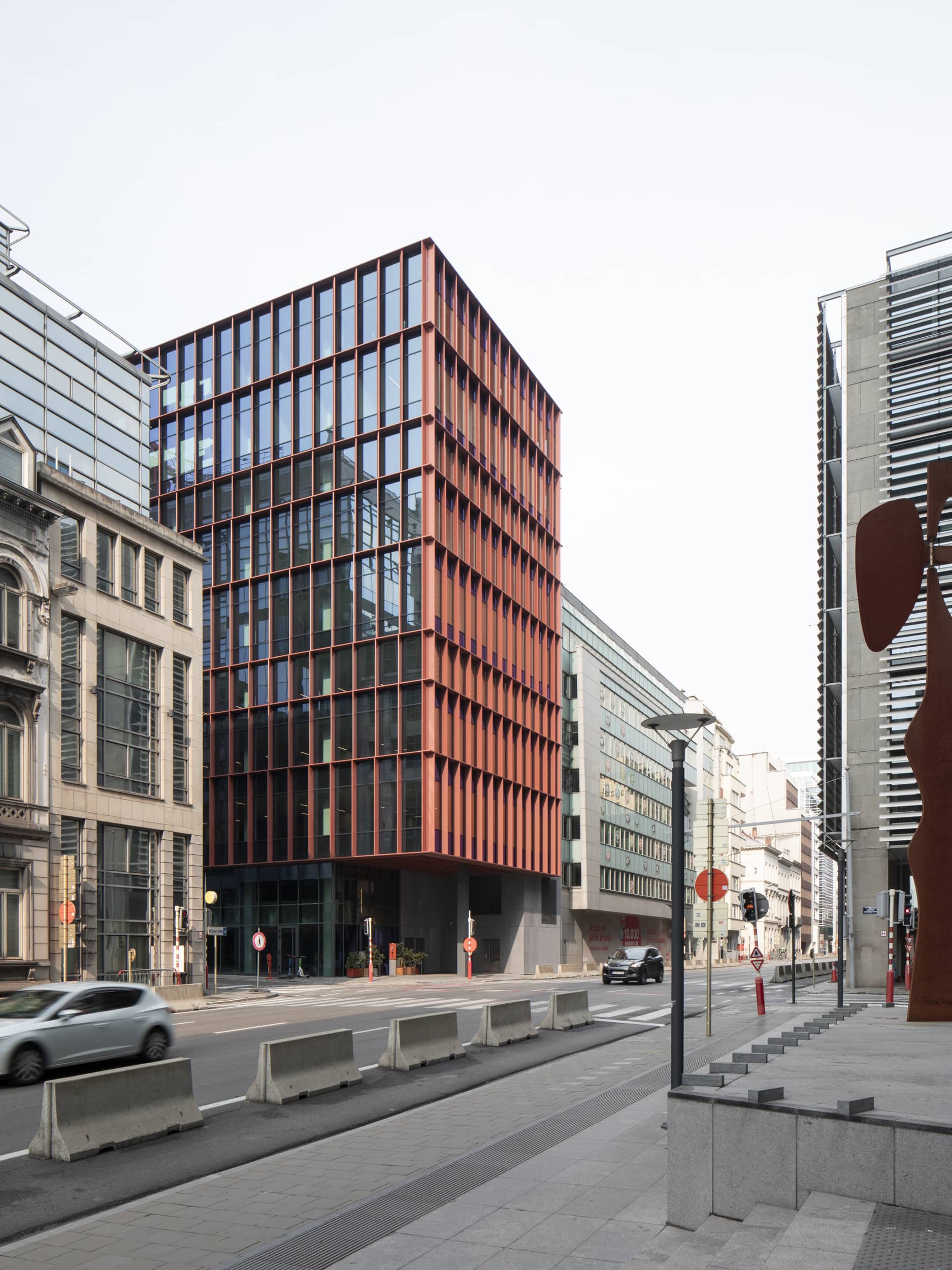We didn’t start from scratch. We started from Bunshaft’s principles: transparency, well-being, art, innovation. We restored the original entrance facing Marnix Square, giving the building back its civic role and clarifying how it meets the city. The former basement was opened into a duplex, creating generous connections to the garden and activating previously residual space. A vertical void now cuts through every floor, bringing daylight, air and coherence, and acting as a spatial spine and social catalyst. Internal connections were redefined to unify the two volumes, and the ground floor was reprogrammed to introduce shared uses and visual openness to the public realm. The interior was restructured for flexibility and collaboration. Passive House strategies, biophilic elements and natural materials support the ambition to achieve WELL Platinum certification, a standard focused on health, comfort and quality of life for building users. The integration of art, central to the building’s original identity, is reactivated as part of the spatial composition, reinforcing the continuity between architecture, culture and everyday experience. The result: a structure that breathes again. That welcomes. That works.
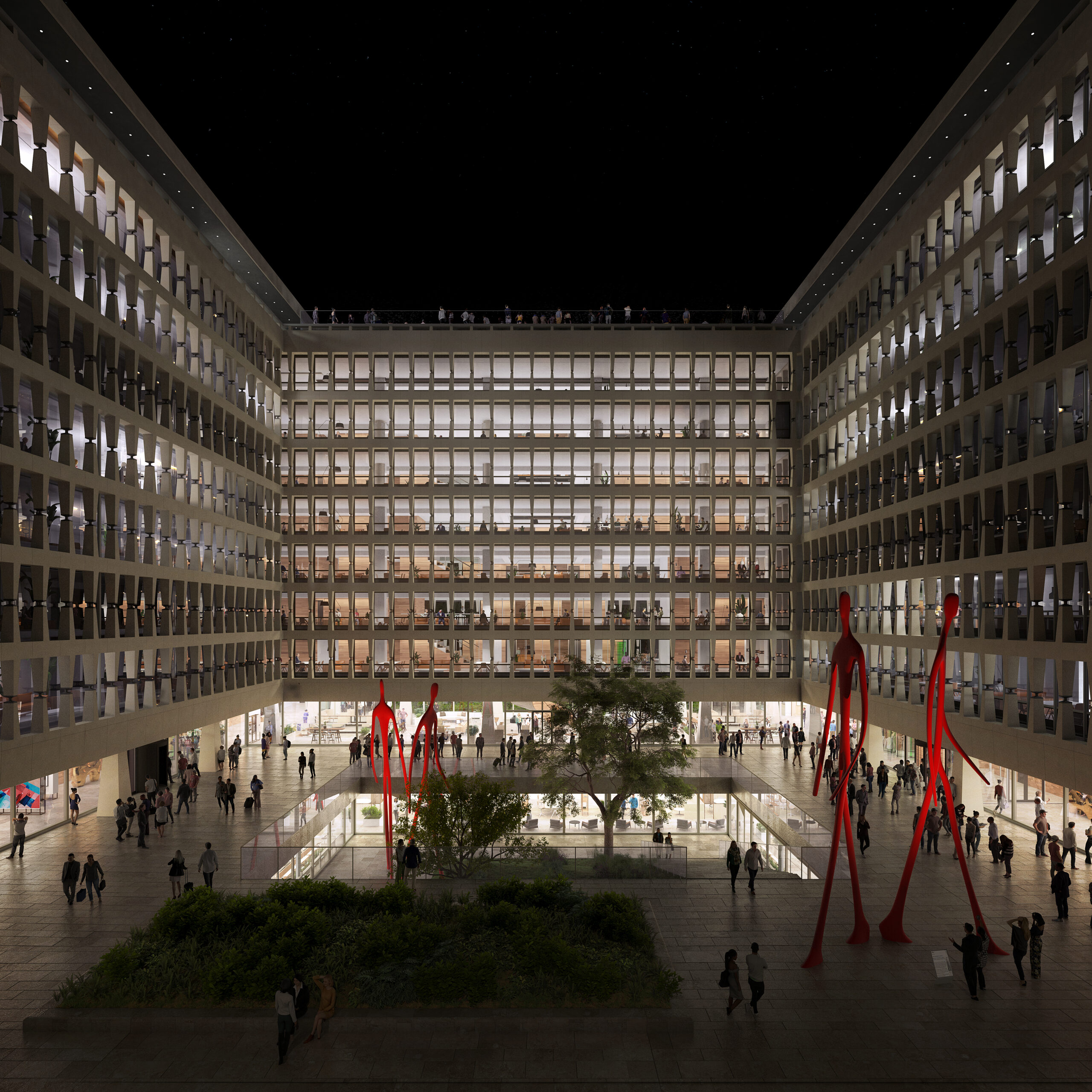
- 2020 - ongoing
- ING Belgium
- Architecture, Interior Architecture, Climate Design
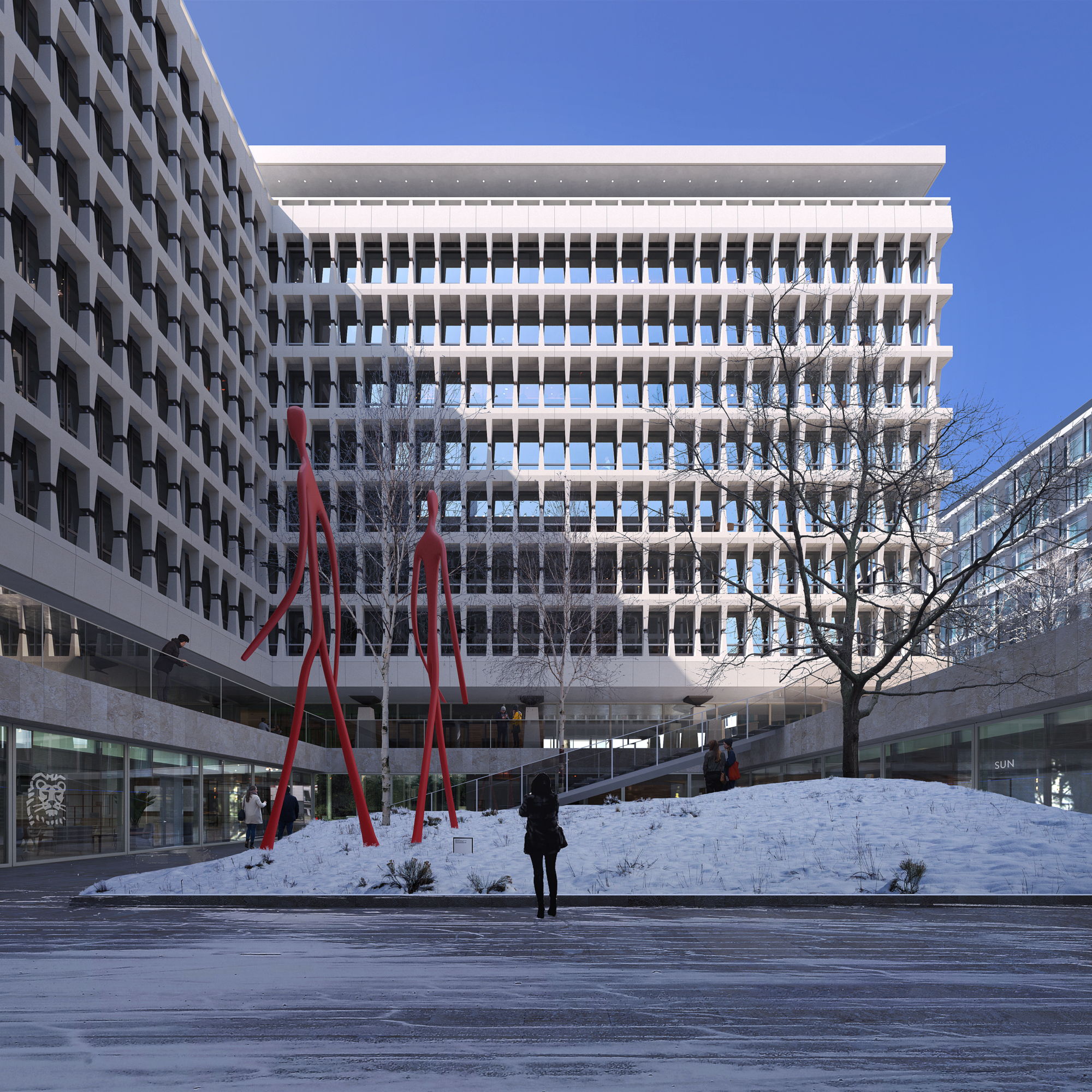
The Marnix building was born modern. Designed by Gordon Bunshaft in 1957 for a visionary banker, it embodied transparency, progress and confidence. The first volume was built in 1964, followed in 1992 by a second phase that resulted in the final H-shaped layout of the building. This extension diluted the clarity of the original palazzo concept, weakening the spatial legibility of the whole. Sixty years on, what was once radical had become rigid. The building still offered generosity to the city; the public plaza along the Brussels inner ring remained an active, open space. Yet the internal logic had fractured. A secondary entrance had overtaken the original, creating confusion and blurring the identity of the base. Inside, the workspaces no longer met contemporary expectations. While structurally sound, they lacked flexibility, comfort and technical coherence. Circulation was fragmented, systems were outdated, and the two volumes functioned as disconnected entities. What remained was a complex building with architectural value, but a fractured spatial and functional logic. The challenge: could we honour Bunshaft’s vision by rewriting it? Could a heritage-listed modernist giant become a regenerative model for the next era?
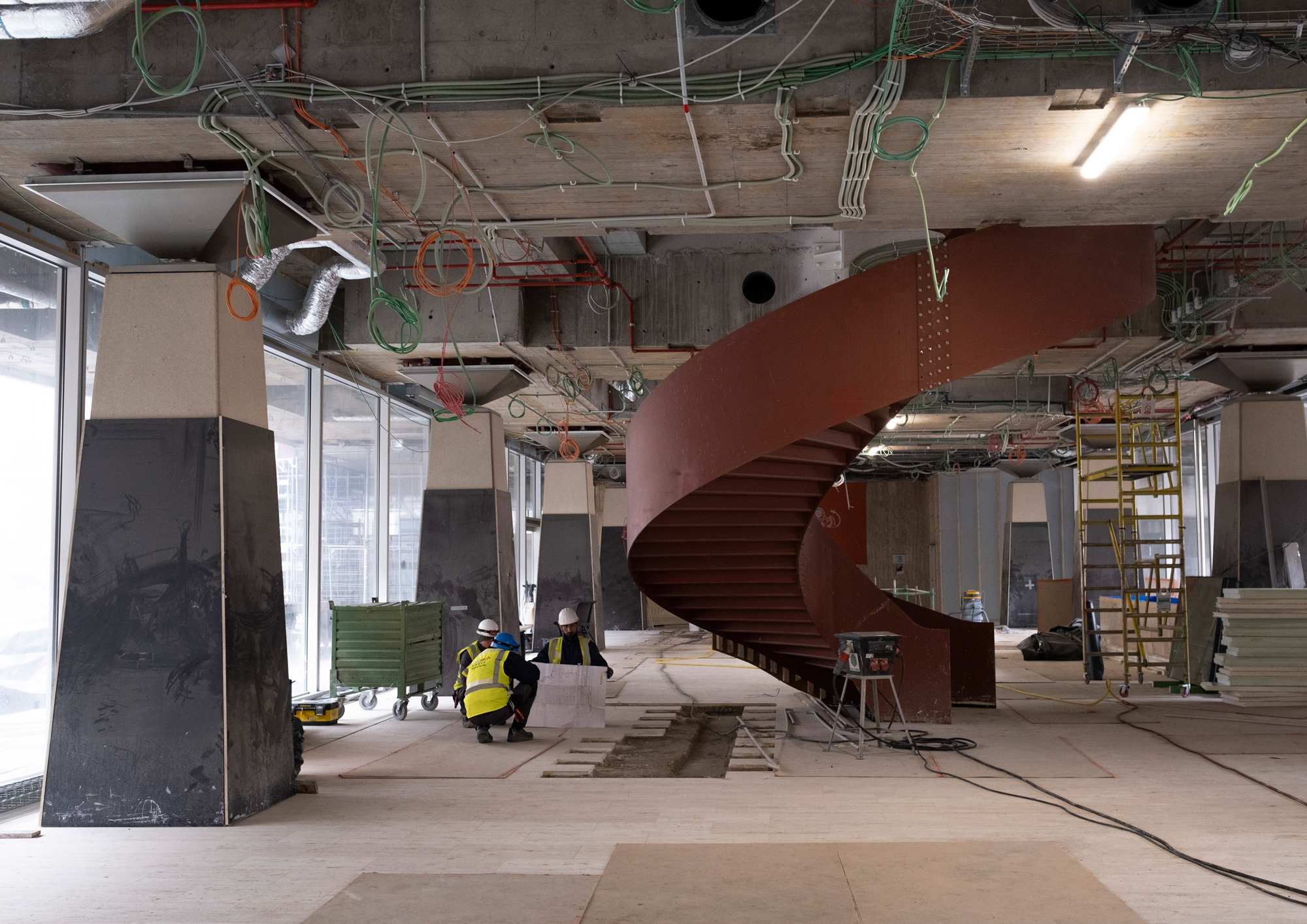
by transformation.
The new Marnix is more than a renovation. It challenges what heritage can be. The project aims to reduce energy use by 85% and CO₂ emissions by 75%, while improving spatial quality, programmatic flexibility and user comfort. The public plaza is redefined as a civic space, and the former basement becomes a sculpture garden. Shared areas are distributed across the building, from garden level to rooftop, creating a more open and inclusive environment. BREEAM Outstanding, Passivhaus and WELL Platinum ambitions converge without compromising architectural clarity. Dry-assembled systems and reversible partitions support a circular approach and future adaptability. This is not about preserving a static object. It is about showing that transformation can extend the life of modernist heritage, technically, socially and culturally. The building doesn’t revert to the past. It shows how adaptation can lead.
An interactive visual window into our planet's
changing climate, based on the most recent
measurements and climate model predictions
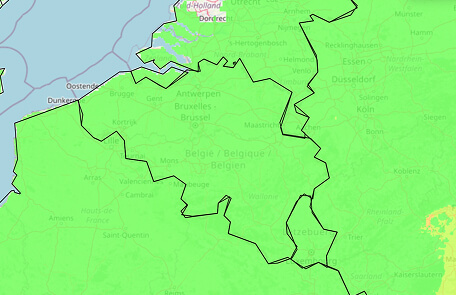
Brussels’ climate is warm and temperate. Rainfall in Brussels is fairly consistent throughout the year, with precipitation even in the driest months. According to the Köppen and Geiger classification system, this location is designated as Cfb, typical of oceanic climates. The average annual temperature recorded in Brussels is approximately 10.5 °C, while total annual precipitation reaches around 850 mm.
| Location | Brussels, BEL |
| Status | Under Construction |
| Type | Competition, 1st Prize |
| Size | 54,058 m² |
| Collaboration | Moreno Architecture, Tractebel-Engie, UTIL, Immo-pro, Lemaire Ingénieurs, Suède 36, D2S |
| Awards | 1st prize in international architectural competition |
| Photographer | Oona Oikkonen, Anais Callens (POTTEAU) |
| Image Credits | Please note that we have used a small number of images for which the copyright holders could not be identified. In these cases it has been our assumption that such images belong to the public domain. If you claim ownership of any of the images presented and have not been properly identified, please notify A2M and we will make a formal acknowledgement. |
more structure.
The transformation is guided by precision and restraint. The entire building envelope was redefined: façades were rebuilt with triple glazing and high-performance insulation to ensure airtightness, comfort and energy performance. All technical systems were limited to the essential and routed beneath raised floors, where ventilation and climate control are integrated into a flexible underfloor infrastructure. Photocatalytic coatings help purify the surrounding air. Simulations guided every design choice, from daylight and air flow to thermal bridges, acoustics and material impact. A clear distinction was made between fixed and flexible components, allowing reversible layouts and long-term adaptability. Circularity is embedded through dry-assembled materials and low-impact construction methods. Art was reintegrated, not as a layer but as a structural presence. The rooftop is shared. The spatial logic is restored. Marnix preserves the spirit of the original while enabling a new way of inhabiting it: resilient, legible and ready for what’s next.
